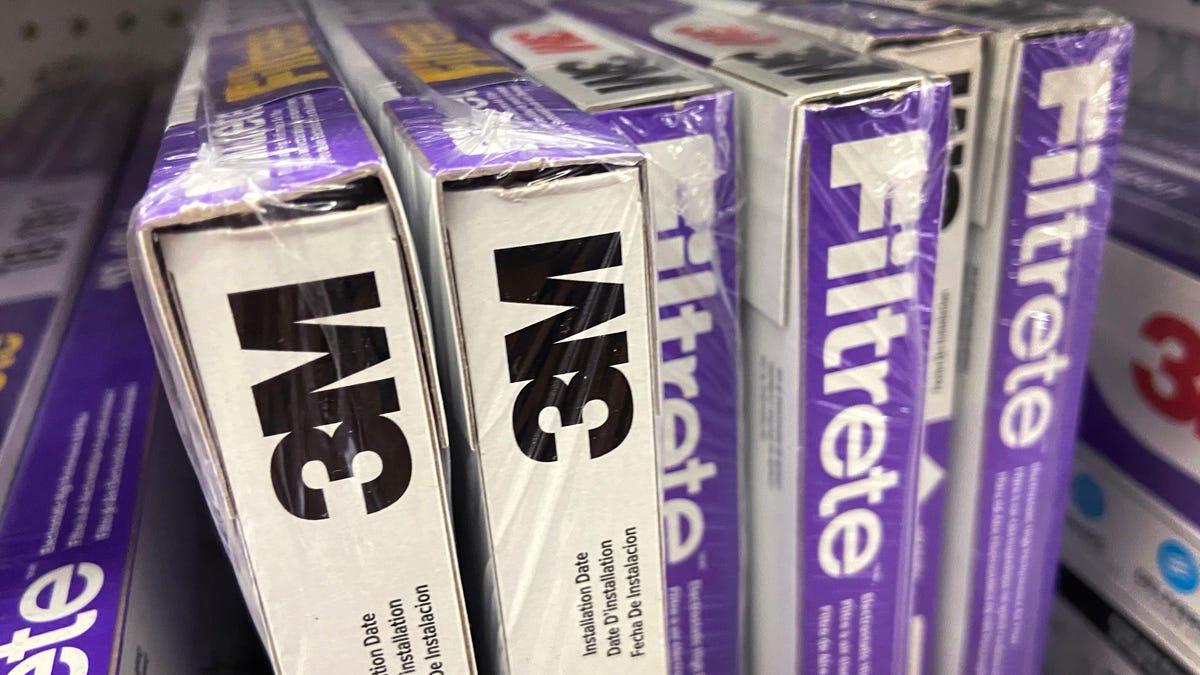Yes, You Need to Replace Your Furnace Filter Year Round
But how often?

Make sure you're replacing your furnace filter regularly.
Even in the warmer months of the year, you should regularly monitor your furnace filter's condition -- and replace it as needed -- to keep your family safe and your furnace in good working condition. Luckily, swapping out your old filter is a simple home maintenance task that you can tackle in less than 15 minutes.
Below, we'll run through the basics of changing your furnace's filter, including when (and how) to do it and why it matters.
Read also: This One Simple Thing Could Help Your Furnace Last Years Longer
When to replace your furnace filter
Filters play a vital role in the overall function of your furnace -- and can have a noticeable impact on the air quality in your home.
In short, your furnace filter traps dirt, dust, allergens and other pollutants, so they don't flow into your heating and cooling system (and you don't breathe them in). It also creates a barrier to prevent contaminants from entering and damaging your system.
In most cases, you should replace your filter at least every three months -- including in summer. If you can't seem to remember to do it, a good rule of thumb is to change your furnace filter every time the seasons change.
With that said, there are some factors that could impact how often you need to change yours, including:
- Filter thickness. Thicker filters can collect more debris and don't need to be replaced as often as thinner ones. If your filter is more than 2 inches thick, you should be able to wait a few more months to change it.
- Location. If you live in a city, your filter will clog up faster than it would if you lived in a rural area.
- Season. During winter, your furnace works hard to warm your home, which can make your filter get dirtier, faster.
- Pets. Pet hair, dander and dirt can collect in your furnace filter, so you may need to replace it more often if you have furry friends at home.
- Health conditions. If you struggle with allergies or asthma, changing your furnace filter every month or two may help with your symptoms.
Why changing your furnace filter is important
It may seem inconsequential, but keeping your furnace filter clean is incredibly important. Here are a few of the reasons that you should make replacing your filter a priority.
Your health and safety
Most importantly, using a debris-free filter will help improve the air quality in your home. If your filter is dirty, your furnace won't be able to circulate clean air throughout your home, which could put your health at risk.
On top of that, clogged furnace filters can create a safety hazard. When airflow is blocked by dirt, pollen and other contaminants, it forces your furnace into overdrive, which can make the motor overheat and start a fire.
The lifespan of your furnace
Like anything else in life, looking after your furnace will help extend its lifespan. And since installing a new furnace costs thousands of dollars, it's within your best financial interest to take good care of the one you have. This includes regularly changing the filter, cleaning the entire unit and scheduling maintenance as needed.
If you keep using your furnace when the filter is dirty, it can cause dust, hair, mold and other debris to collect inside your heating and cooling system. This can damage your system, forcing you to get expensive repairs or replace it entirely.
Energy costs
Finally, maintaining your furnace filter can even help you save on your energy bills. When your filter is clogged, it's harder for your furnace to draw air in, making it work harder and use more energy.
Fortunately, this situation is preventable. In fact, according to the Department of Energy, you can reduce the energy consumption of a heating and cooling unit by between 5% and 15% just by replacing the filter when it gets dirty.
How to replace your furnace filter
Now that you know when and why to replace your furnace filter, let's go over how to do it. The instructions may vary slightly depending on your particular furnace, but here's a general overview:
1. Shut off the furnace.
2. Open the service panel (the long and narrow door that hides the filter).
3. Pull out the old filter and set it aside.
4. Insert the new filter, following any arrows or directions on the package.
5. Close the service panel.
6. Turn on the furnace.
The bottom line
Regularly replacing your furnace filter is a simple way to maintain healthy air quality in your home, keep your furnace in good shape and even save on energy costs. Even better? It only takes a few minutes out of your day.
More home, energy and utility advice
- 7 Easy and Free Ways to Save Money on Your Gas, Electric and Water Bills Now
- Heat Pump vs. Furnace: Learn the Difference Between These 2 Heat Sources
- How to Find the Right Size Furnace for Your Home
- Unplug These Home Appliances to Save Money and Electricity ASAP
- Set Your Thermostat to This Temperature to Save Money This Summer